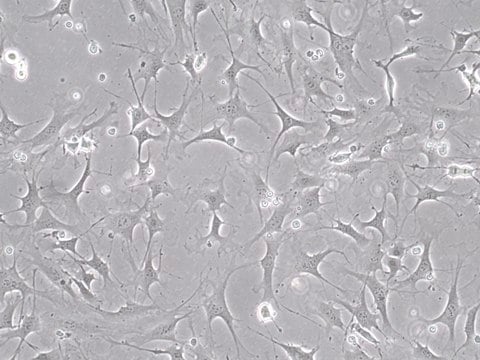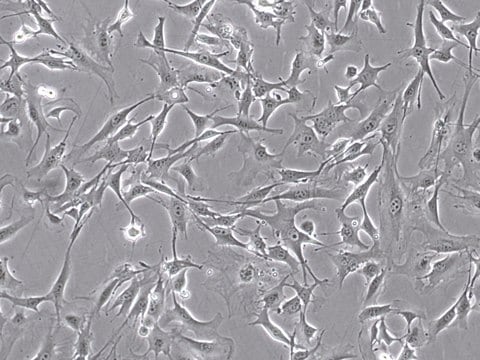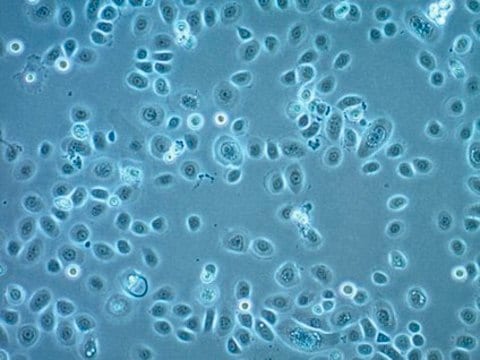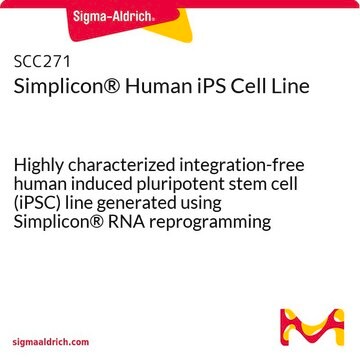Features and Benefits
The VOA1066 cell line is highly tumorigenic in vivo, with a stable genome demonstrating few somatic mutations. These cells may prove useful for studying the roles of ARID1A and ARID1B in undifferentiated endometrial carcinoma, and for the development of endometrial carcinoma therapeutics.
Target description
Endometrial cancer (EC) is the sixth most common cancer globally in women, with an estimated 417,367 new cases in 2020 (1). EC can be divided into two types: estrogen-dependent type I which is the most common, and estrogen-independent type II that is more aggressive (2). Within type II, a subtype is dedifferentiated EC, where an undifferentiated carcinoma develops from a low-grade endometroid endometrial cancer (2). Dedifferentiated EC has a worse prognosis, with a median survival of 6 months and disease-related death rate ranges from 41% to 75% ocurring in the first 5 years after diagnosis (3).VOA1066 is a human undifferentiated endometrial carcinoma cell line derived from endometrial primary tumor tissue collected at the time of surgery from a 74-year old woman (2). VOA1066 is tumorogenic in vivo, has metastatic ability in immunodeficient mice and the xenografted tumor morpholgy is similar to that of the primary tumor. This cell line is chromosome and genome stable, and has a single translocation identified by karyotype (2). VOA1066 contains few somatic mutations which include inactivating mutations of ARID1A and ARID1B, and a heterozygous hotspot DICER1 mutation in its RNase IIIb domain (2). Genomic studies of dedifferentiated EC have shown three types of inactivating mutations in subunits of the SWI/SNF chromatin remodeling complex including SMARCA4, SMARCB1 and ARID1B (4). VOA1066 can be used to study the effects of SWI/SNF mutations in EC as well as to understand the pathogenesis of the disease.Source:VOA1066 undifferentiated endometrial carcinoma cell line was isolated from endometrial primary tumor tissue.References: 1. Sung H, Ferlay J, Siegel RL, Laversanne M, Soerjomataram I, Jemal A, Bray F. 2021. Global Cancer Statistics 2020: GLOBOCAN Estimates of Incidence and Mortality Worldwide for 36 Cancers in 185 Countries. CA Cancer J Clin. 71(3): 209–249.2. Wang Y, Tao VL, Shin CY, Salamanca C, Chen SY, Chow C, Köbel M, Ben-Neriah S, Farnell D, Steidl C, et al. 2020. Establishment and characterization of VOA1066 cells: An undifferentiated endometrial carcinoma cell line. PLoS One. 15(10): e0240412. 3. Al-Loh S, Al-Hussaini M. 2013. Undifferentiated endometrial carcinoma: a diagnosis frequently overlooked. Arch Pathol Lab Med. 137(3): 438–442. 4. Wang Y, Hoang L, Ji JX, Huntsman DG. 2020. SWI/SNF complex mutations in gynecologic cancers: molecular mechanisms and models. Annu Rev Pathol. 15: 467–492.
Disclaimer
RESEARCH USE ONLY. This product is regulated in France when intended to be used for scientific purposes, including for import and export activities (Article L 1211-1 paragraph 2 of the Public Health Code). The purchaser (i.e. enduser) is required to obtain an import authorization from the France Ministry of Research referred in the Article L1245-5-1 II. of Public Health Code. By ordering this product, you are confirming that you have obtained the proper import authorization.
Unless otherwise stated in our catalog or other company documentation accompanying the product(s), our products are intended for research use only and are not to be used for any other purpose, which includes but is not limited to, unauthorized commercial uses, in vitro diagnostic uses, ex vivo or in vivo therapeutic uses or any type of consumption or application to humans or animals.







